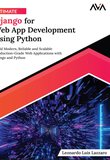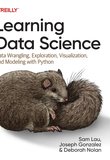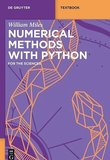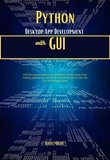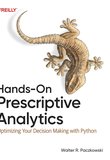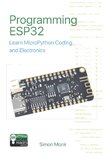-
.NET (.NET Core)
-
1C
-
APL
-
AWK
-
Agda
-
Agile/Scrum
-
Alef
-
Assembler
-
Basic
-
Beta Programming Language
-
Big Data/DataScience
-
C
-
C#
-
C++
-
CSS
-
Cobol
-
Crystal
-
D
-
Dart
-
DataBase (SQL)
-
Delphi
-
F#
-
Flutter
-
Fortran
-
GPT/AI/ИИ
-
GameDev
-
Git
-
Go (Golang)
-
HTML
-
Hacking and Security
-
Haskell
-
Java
-
JavaScript (JS)
-
Julia
-
Kotlin
-
Machine Learning (ML)
-
Natural language processing (NLP)
-
PHP
-
Pascal
-
Python
-
R
-
Ruby
-
Rust
-
Scratch
-
Swift
-
UML
-
UX/UI
-
Visual Basic
-
Wolfram
-
XML
-
АСУ
-
Проектирование/System Design
-
Сети/Network
-
Схемотехника/электронные схемы
-
.NET (.NET Core)
-
1C
-
APL
-
AWK
-
Agda
-
Agile/Scrum
-
Alef
-
Assembler
-
Basic
-
Beta Programming Language
-
Big Data/DataScience
-
C
-
C#
-
C++
-
CSS
-
Cobol
-
Crystal
-
D
-
Dart
-
DataBase (SQL)
-
Delphi
-
F#
-
Flutter
-
Fortran
-
GPT/AI/ИИ
-
GameDev
-
Git
-
Go (Golang)
-
HTML
-
Hacking and Security
-
Haskell
-
Java
-
JavaScript (JS)
-
Julia
-
Kotlin
-
Machine Learning (ML)
-
Natural language processing (NLP)
-
PHP
-
Pascal
-
Python
-
R
-
Ruby
-
Rust
-
Scratch
-
Swift
-
UML
-
UX/UI
-
Visual Basic
-
Wolfram
-
XML
-
АСУ
-
Проектирование/System Design
-
Сети/Network
-
Схемотехника/электронные схемы
Меню
Pythonic Quant: A Comprehensive Guide to Python in Finance (Financial Modelling, Data Analysis, Algorithmic Trading & Data Visualization)
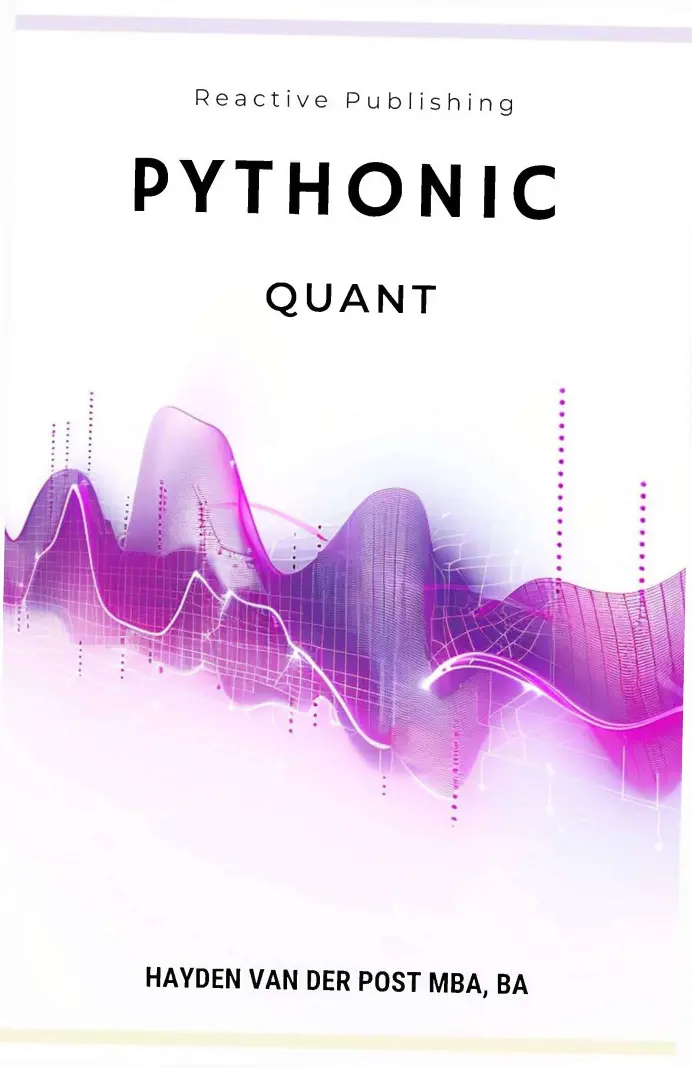
Автор: Van Der Post Hayden
Дата выхода: 2024
Издательство: Reactive Publishing
Количество страниц: 606
Размер файла: 15,4 МБ
Тип файла: PDF
Добавил: codelibs
PYTHONIC
CONTENTS
PREFACE
CHAPTER 1: THE EVOLUTION OF
PROGRAMMING IN FINANCE
Analyzing the Shift from Manual Calculations to Digital Solutions in Finance
The Role of Software in Modern Financial Analysis
How Python Emerged as a Leading Tool in Finance
Why Python?
Comparison with Other Programming Languages
Python's Simplicity and Versatility
Community and Library Support
Applications and Implications
Real-World Applications of Python in Finance
Case Studies of Successful Python Implementation in Finance
Building the Foundation: Python Basics for Finance
CHAPTER 2: BUILDING THE
FOUNDATION: PYTHON
BASICS FOR FINANCE
Choosing the Right Python Version and Distribution
Anaconda stands out for several reasons:
Essential Tools: IDEs and Jupyter Notebooks
Installing and Managing Financial Libraries
Basic Syntax and Variables:
Data Structures:
Control Structures:
Basic Syntax and Data Structures: The Pillars of Python in Finance
Functions, Classes, and Modules Relevant to Finance
Working with Financial Data: APIs and Databases
From Basics to Finance-Specific Applications: A Deep Dive
Manipulating Financial Data with Pandas: Techniques and Insights
Visualizing Financial Data with Matplotlib and Seaborn: A Comprehensive Guide
Basic Statistical Analysis Using NumPy and SciPy: Unveiling Financial Insights
CHAPTER 3: UNDERSTANDING
FINANCIAL DATA
Alternative Data: Social Media, News
The Importance of Time Series Data in Finance
Sources of Financial Data: Free vs. Paid
Techniques for Data Cleaning and Preprocessing
Ensuring Data Quality and Integrity
Data Analysis and Interpretation
Exploratory Data Analysis (EDA) Techniques
Basic Financial Metrics and Their Computation
Introduction to Quantitative Models and Their Applicability
CHAPTER 4: TIME SERIES ANALYSIS
Date-time Indexing in Pandas
Resampling and Frequency Conversion
Time Series Forecasting Models
ARIMA and Seasonal ARIMA
Machine Learning Approaches
Evaluating Forecasting Model Performance
Case Study: Predicting Stock Prices
Preprocessing Stock Market Data
Analysis and Interpretation of the Results
Quantitative Trading Strategies
CHAPTER 5: QUANTITATIVE
TRADING STRATEGIES
Introduction to Algorithmic Trading
Difference Between Quantitative and Traditional Trading Strategies
Review of Common Quantitative Strategies
Back testing Trading Strategies
The Importance of Backtesting
Implementing a Trading Bot
Risk Management and Optimization
CHAPTER 6: RISK MANAGEMENT
AND PORTFOLIO OPTIMIZATION
Understanding Risk in Quantitative Finance
Quantitative Methods for Risk Assessment
Risk Metrics: VaR, CVaR, Sharpe Ratio, and Beyond
Portfolio Optimization Techniques
The Efficient Frontier
Multi-factor Models
Real-world Application: Managing Investment Portfolios
Applying Optimization Techniques to a Portfolio
Balancing Risk and Return
CHAPTER 7: MACHINE
LEARNING IN FINANCE
Introduction to Machine Learning
Overview of Machine Learning in Finance
Supervised vs. Unsupervised Learning in Finance
Key Concepts: Overfitting, Underfitting, and Regularization
Predictive Modeling for Asset Pricing
Natural Language Processing (NLP) for Sentiment Analysis
Challenges and Ethical Considerations in Deep Learning for Finance
Data Privacy and Security in the Age of Quantitative Finance
Ethical Considerations in Automated Trading
The Future of Machine Learning in Finance
CHAPTER 8: BLOCKCHAIN AND
CRYPTOCURRENCY ANALYSIS
Introduction to Blockchain Technology
Basics of Blockchain and Its Relevance to Finance
Cryptocurrencies: Bitcoin, Ethereum, and Beyond
Smart Contracts and Decentralized Finance (DeFi)
Analyzing Cryptocurrency Markets
Collecting and Analyzing Cryptocurrency Data
Volatility Analysis of Cryptocurrency Markets
Predictive Models for Cryptocurrency Prices
Implementing Blockchain in Financial Solutions
Use Cases of Blockchain in Traditional Finance
Developing Blockchain-Based Financial Products
Regulatory and Security Considerations in Developing Blockchain-Based Financial Products
CHAPTER 9: THE FUTURE OF QUANTITATIVE FINANCE
Emerging Technologies and Their Impact
Al and Machine Learning Advancements
Quantum Computing and Its Potential in Finance
The Evolution of Data Sources and Analytics
Skills for the Future Quantitative Analyst
Adapting to New Technologies and Methodologies
The Importance of Interdisciplinary Knowledge
Continuous Learning and Professional Development
Regulatory and Ethical Considerations
Ethical Investing and Sustainability Concerns
ADDITIONAL RESOURCES
Books
Articles and Research Papers
Websites and Online Resources
Organizations
Tools and Libraries
PYTHON BASICS FOR
FINANCE GUIDE
Variables and Data Types
Example:
Example:
DATA HANDLING AND ANALYSIS
IN PYTHON FOR FINANCE GUIDE
Pandas for Financial Data Manipulation and Analysis
Key Features:
NumPy for Numerical Calculations in Finance
Key Features:
TIME SERIES ANALYSIS IN
PYTHON FOR FINANCE GUIDE
Pandas for Time Series Analysis
DateTime for Managing Dates and Times
VISUALIZATION IN PYTHON
FOR FINANCE GUIDE
Matplotlib and Seaborn for Financial Data Visualization
Line Graphs for Stock Price Trends:
Example:
Histograms for Distributions of Returns:
Example:
Heatmaps for Correlation Matrices:
Example:
Interactive Line Graphs for Stock Prices:
Example:
ALGORITHMIC TRADING IN PYTHON
Backtrader for Backtesting Trading Strategies
Key Features:
ccxt for Cryptocurrency Trading
Key Features:
FINANCIAL ANALYSIS WITH PYTHON
Variance Analysis
TREND ANALYSIS
HORIZONTAL AND
VERTICAL ANALYSIS
RATIO ANALYSIS
CASH FLOW ANALYSIS
SCENARIO AND SENSITIVITY
ANALYSIS
BREAK-EVEN ANALYSIS
CREATING A DATA VISUALIZATION
PRODUCT IN FINANCE
DATA VISUALIZATION GUIDE
ALGORITHMIC TRADING
SUMMARY GUIDE
FINANCIAL MATHEMATICS
BLACK-SCHOLES MODEL
THE GREEKS FORMULAS
STOCHASTIC CALCULUS
FOR FINANCE
BROWNIAN MOTION
(WIENER PROCESS)
ITO'S LEMMA
STOCHASTIC DIFFERENTIAL
EQUATIONS (SDES)
GEOMETRIC BROWNIAN
MOTION (GBM)
MARTINGALES
AUTOMATION RECIPES
1. File Organization Automation
2. AUTOMATED EMAIL SENDING
3. WEB SCRAPING FOR
DATA COLLECTION
4. SPREADSHEET DATA PROCESSING
5. BATCH IMAGE PROCESSING
6. PDF PROCESSING
7. AUTOMATED REPORTING
8. SOCIAL MEDIA AUTOMATION
9. AUTOMATED TESTING
WITH SELENIUM
10. DATA BACKUP AUTOMATION
11. NETWORK MONITORING
12. TASK SCHEDULING
13. VOICE-ACTIVATED COMMANDS
14. AUTOMATED FILE CONVERSION
15. DATABASE MANAGEMENT
16. CONTENT AGGREGATOR
17. AUTOMATED ALERTS
18. SEO MONITORING
19. EXPENSE TRACKING
20. AUTOMATED INVOICE
GENERATION
21. DOCUMENT TEMPLATING
22. CODE FORMATTING
AND LINTING
23. AUTOMATED SOCIAL
MEDIA ANALYSIS
24. INVENTORY MANAGEMENT
25. AUTOMATED CODE
REVIEW COMMENTS
Dive into the heart of quantitative finance with 'Pythonic Quant,' your definitive guide to mastering the fusion of Python programming and financial analysis. This book is designed for finance professionals, investors, and economists who have a foundational grasp of Python and are eager to elevate their expertise to new heights.
In a world where market complexities surge and the call for innovative financial strategies grows louder, 'Pythonic Quant' emerges as a crucial resource. It moves beyond introductory concepts to explore the sophisticated techniques that marry theory with practical application, steering you through the advanced realms of quantitative finance with ease and precision.
Targeted at a discerning audience, 'Pythonic Quant' is not just a book—it's an advancement toolkit for financial analysts, risk management experts, quantitative traders, and anyone involved in crafting cutting-edge investment strategies. With content that spans from refreshing Python basics specifically for finance to unveiling the latest in machine learning algorithms, sophisticated mathematical models, and beyond, this book is a treasure trove of knowledge for the year 2024 and onward.
The rapid evolution of quantitative finance can be daunting, but 'Pythonic Quant' ensures you remain at the forefront, integrating theoretical insights with hands-on applications. Its pages are meticulously structured to navigate through complex concepts with clarity, offering step-by-step guidance and practical coding exercises that demystify even the most intricate strategies.
'Pythonic Quant' unfolds a comprehensive curriculum, from Python fundamentals tailored for quantitative finance to the pinnacle of financial simulation technologies and advanced data analysis techniques. Real-world case studies punctuate its chapters, granting you the opportunity to apply what you've learned to actual financial scenarios.
Embracing the cutting-edge methodologies detailed in 'Pythonic Quant,' you'll not only boost your analytical prowess but also position yourself to exploit the full potential of technology in finance. This book is a beacon for those committed to excellence, offering the advanced techniques that will delineate the next frontier in quantitative finance.
Prepare to be inspired, challenged, and equipped with the tools to soar to new professional heights. 'Pythonic Quant' is more than a book—it's your next chapter in the captivating world of quantitative finance, powered by Python.
